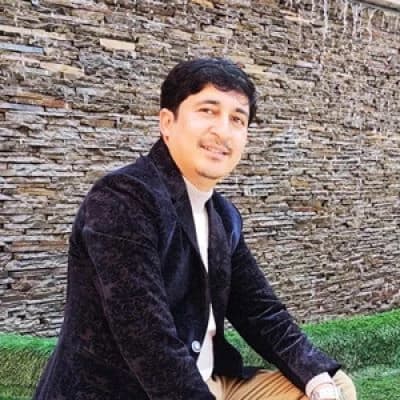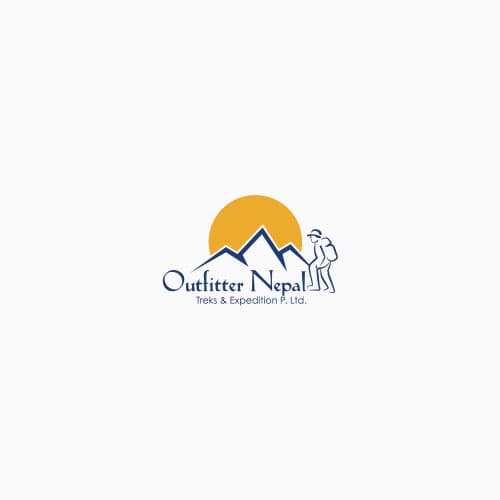The Mustang Valley
Situated in the northernmost region of Gandaki Province in central Nepal, the Mustang district shares its border with Tibet, and the entire district comes under Annapurna Conservation Area. A former forbidden kingdom, Mustang is surrounded by the Tibetan Plateau in the north and some of the world's highest peaks, including the eight-thousanders, Annapurna, and Dhaulagiri in the south. It is one of the remotest districts of Nepal, with the second lowest population. Despite its remoteness, Mustang is quite popular among travel communities, be it domestic or international. The credit for Mustang's touristic fame goes to its unique topography and ancient Tibetan Buddhist culture.
The Mustang Valley can be a perfect holiday destination for you if you're fascinated by mountains, are a religious traveler, have a keen interest in ancient cultures, or simply like to explore off-beat places. The high-altitude desert mountains of Mustang pull everyone's attention. Imagine waking up to the gorgeous Himalayan sunrise, exploring the secret valley, getting to know the reserved but kind locals of the region, eating delicious local cuisines, paying a visit to the old Hindu temples and Buddhist monasteries, and ending your day with an equally beautiful sunset. Doesn't that feel like a dream?
This dreamy land of Mustang is separated into two regions: Upper Mustang and Lower Mustang. These two parts of the Mustang are distinct yet related. They provide visitors with different attractions in terms of accessibility, landscape, culture, and price. Let's get to know them both.
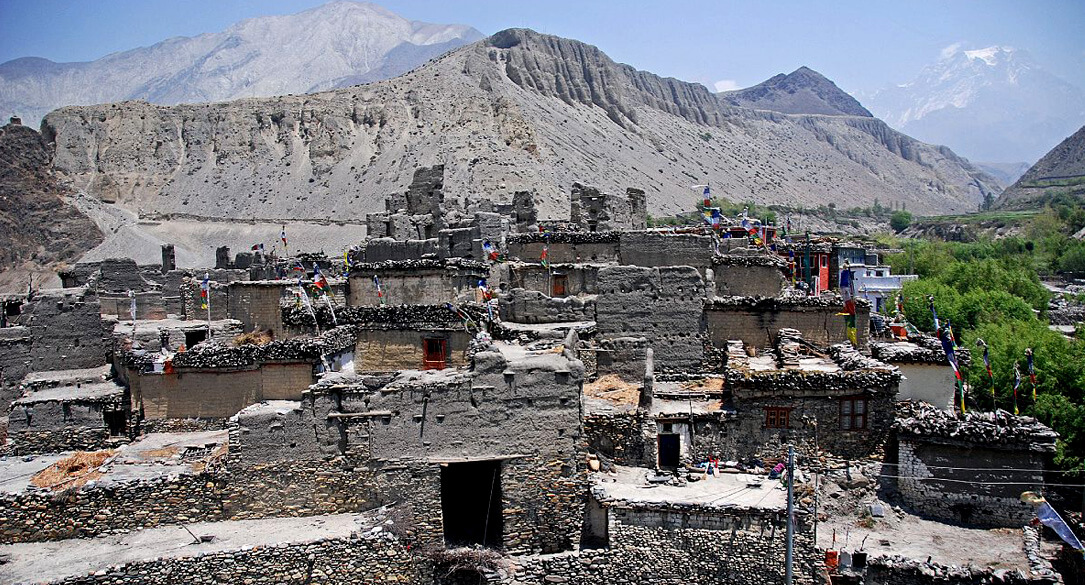
Lower Mustang
The southern part of the Mustang district, lying north of the Himalayas with areas of relatively lower altitudes and sparse population, is Lower Mustang. As soon as you enter Lower Mustang, you'll be welcomed by a desert-like mountain valley with minimum vegetation. Lower Mustang will come as quite a surprise if you're used to the verdant green slopes and terraced rice fields of other regions of Nepal.
Lower Mustang doesn't experience monsoons due to its Himalayan rain-shadow location. The absence of the monsoon has left the terrain extremely dry. The only greenery you'll encounter is in the irrigated farmland surrounding towns. Geographically and geologically, Lower Mustang resembles Tibet and other Himalayan rain-shadow regions, including Ladakh in India. Agriculture and animal husbandry are the main occupations of Lower Mustang, which also makes a good earning from the tourism industry as it houses popular tourist destinations like the Muktinath Temple, Kagbeni, Jomsom, and Marpha.
Upper Mustang
The Upper Mustang comprises the northern two-thirds of the Mustang district and shares its border with Tibet. Up until 1992, the Upper Mustang was an isolated kingdom, making it one of the world's best-preserved areas. The majority of the locals still speak ancient Tibetan languages, as the region is inhabited by Tibetan Buddhists. Because of the area's relative isolation from the outside world, Tibetan culture has been preserved to date.
The region also features a dry mountain desert, deprived of green vegetation, except for a small portion of agricultural land around the villages. The region is colder than the Lower Mustang, limiting the crops grown in the area. Hence, tourism, livestock husbandry, and trade are the three mainstays of life here.
Upper Mustang was only open to foreign tourists in 1992, and they require a special permit to enter this restricted region from the Immigration of Nepal. While most domestic and religious tourists make it up to Lower Mustang, the majority of international tourists are attracted to Upper Mustang. Places like Chhusang, Dhakmar, Lo Manthang, Tsarang, and Chhoser are some of the popular tourist destinations in Upper Mustang.
Major Attractions of Mustang
While there are a number of things to do and places to see in Mustang, some places are more popular than others. We've listed some of the most famous tourist attractions of Mustang. Let's have a look.
Jomsom
Jomsom, also known as DzongSam or New Fort, is located at a height of 2,700 meters in the Lower Mustang. It is a little town known for its tourism and is also an entry point of Upper Mustang and Kali Gandaki Gorge, the deepest canyon in the world. Jomsom has an airport that connects domestic flights from Pokhara, which takes only 20 minutes over the wonderful Himalayas.
The town is situated on each side of the Kali Gandaki River, which runs directly through the heart of Jomsom and is framed by the towering Dhaulagiri and Nilgiri mountains. The exceptional scene routes from Jomsom are very picturesque and go through a variety of landscapes, including a wonderful forest of vibrant rhododendron trees, rocky cliffs, and the desert. The Hindu and Tibetan Buddhist cultures coexist in this lovely town.
Muktinath Temple
Muktinath Temple, situated at the base of Thorong La Pass in Lower Mustang, is one of the oldest sacred Buddhist and Hindu pilgrimage destinations. It is also one of the world's tallest temples at an elevation of 3,800 m and is regarded as a Mukti Kshetra (location of liberation). According to mythology, visiting the Muktinath Temple will cleanse you of all your sins and grant you good fortune. Thousands of pilgrims from various locations in India and Nepal visit the temple to take a bath in the holy pond and the 108 sacred taps located on the temple grounds.
In addition to the other seven Swayam Vyakta Kshetras —Srirangam, Srimushnam, Tirupati, Naimsharanya, Pushkar, and Badrinath — the shrine is one of the eight holy sites. It is one of the 108 Divya Desam holy sites honoring the devotion to Lord Vishnu. Similarly, it is one of the 51 Shakti Pithas honoring Goddess Sati (Shakti), Lord Shiva's wife.
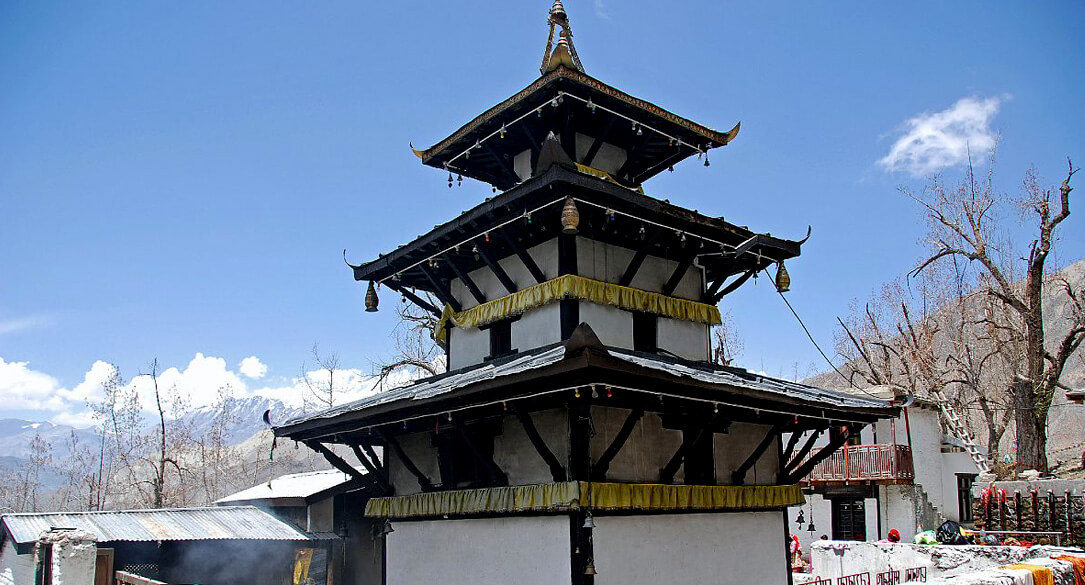
Lo Manthang
Lo Manthang is a small town in Upper Mustang best known for its former royal residence, monasteries, and lofty whitewashed mud-brick walls. The five-story, nine-cornered building makes up the Royal Palace, which was constructed about 600 years ago and still stands firmly to this day. The severe earthquake that struck in April 2015 caused several breaches in the palace.
Four main temples, namely, Jampa Lhakhang or Jampa Gompa, Thubchen Gompa, Chodey Gompa, and Choprang Gompa, are the main attractions of Lo Manthang. Jampa Gompa, also known as the "God house," is the oldest and was built in the early 15th century. Thubchen Gompa, built in the late 15th century, is a large red-colored assembly hall and gompa located southwest of Jampa Gompa. Chodey Gompa is currently the main gompa of the town, and Choprang Gompa is referred to as the "New Gompa."
Man-made Sky Caves
Mustang's collection of over 10,000 man-made caves carved out of the Mustang's valley walls is the most mysterious and distinctive element in the entire region. Researchers and archaeologists discovered skeletons and partially mummified human bodies in these caves that are at least 2,000 – 3,000 years old. Buddhist paintings, manuscripts, sculptures, and other items, dating from the 12th to the 14th centuries have also been found in these caverns. A shepherd stumbled upon a group of 55 cave drawings in 2007 that showed the life of Buddha.
Anyone can be amazed by these caverns due to their unique construction and location. These caves are mainly found in Upper Mustang in Chhusang and Chhoser Village near Lo Manthang.
Ancient Monasteries
Another biggest draw of the Mustang Valley is the number of ancient monasteries that have been well preserved until now. Buddhist practitioners of diverse traditions have long called Mustang Valley home. Tibetan art is now shown in these monasteries, which were formerly educational and artistic hubs for Buddhists. Some temples even have gold-written holy texts, statues of Indian yogis, tantric Mandalas, and frescoes of Buddha and Bodhisattvas. These monasteries are spread all across Mustang within close proximity to human settlements.
Kagbeni
Kagbeni, one of the oldest villages in the Himalayas, is situated on the way from Jomsom to Lo Manthang. It is elevated at an altitude of 2804 meters with a backdrop of Nilgiri North. It is also a junction that separates ways to Jomsom, Muktinath, and Lo Manthang. This tiny village has beautiful surroundings of sand mountains and distant snow-capped mountains. It was reported that Kagbeni had a population of just 555 people in the 2011 Nepal Census.
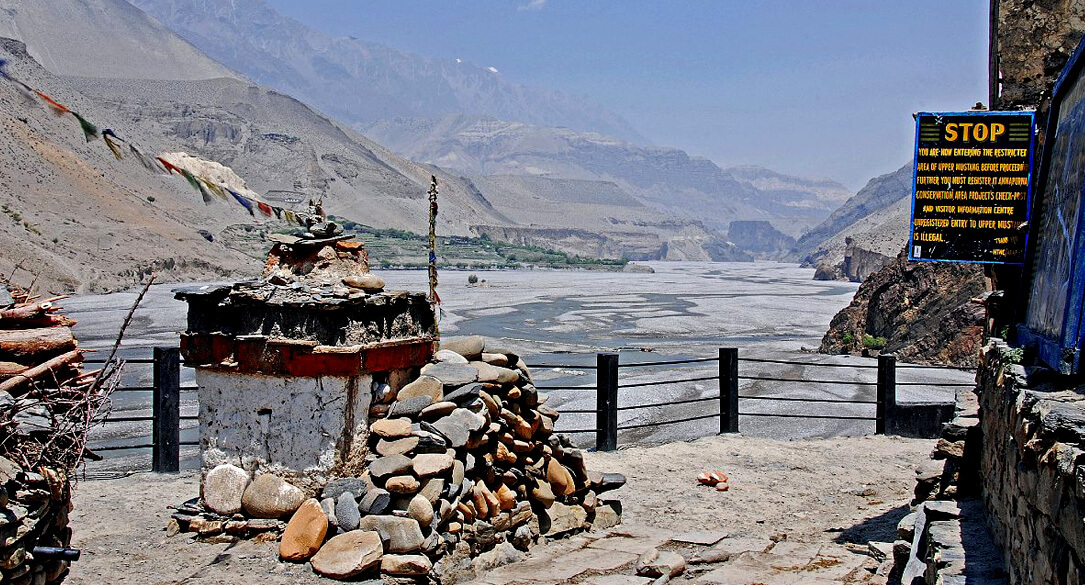
Marpha
Marpha is the apple capital of Nepal, producing and exporting apple brandy and jams. Located 2650 meters above sea level, Marpha lies south of Jomsom and serves tourists and trekkers in the region with flooding and lodging services. Tourism and mule rearing are among the top occupations of people of Marpha, along with apple farming. This beautiful village of Marpha is another important site you must visit during your Mustang trip. Don't forget to try some local alcoholic drinks, jams, and pies made of apples when you're in Marpha.
Festivals of Mustang
Due to its secluded location, Manang has been able to preserve its ancient Tibetan traditions to this day. As Manang was a part of Tibet and then an independent kingdom before Prithvi Narayan Shah unified the small kingdoms to form the country "Nepal," the people of Mustang still have Tibetan influence in their lifestyle.
The Upper Mustang is inhabited by Tibetan descendants who follow Buddhism or Bon religions and has age-old culture and traditions that are unique to modern Buddhism, while the Thakali people of Lower Mustang observe a mix of Buddhism and Hinduism in their culture. As a result, the festivals celebrated in Mustang are unique to the region and interesting to outsiders.
Here are some major festivals celebrated in Mustang every year.
Tenji/Tiji Festival
The Tenji Festival takes place annually in Upper Mustang (Lo Manthang) in the third Tibetan lunar month (April or May by Western calendars). As a ritual, monks portray a traditional Buddhist narrative of good and evil with imaginative dances, including Nga Chham and Tsa Chham. People also celebrate Buddha's victorious incarnation during the 3-day Tiji festival.
Yartung Festival
Though well-liked throughout Mustang, the Yartung Festival is especially cherished in Muktinath, Lower Mustang. The celebration includes dancing, drinking, and horse races that go on for 3 days during the August full moon of every year. The Thakalis and Tibetan people of Mustang come together to bid farewell to the summer season during Yartung.
Saka Lukha Ceremony
The seed-sowing Saka Lhuka Ceremony takes place every February/March in Mustang to pray for timely rainfall and good harvest. During the ceremony, the monks recited passages from sacred texts. New village chiefs are also chosen at this time.
Things to do in Mustang
The remote land of Mustang, with its immaculate landscape, offers several touristic activities like sightseeing, trekking, and mountain biking. Here's more about them.
Sightseeing in Mustang
Both Lower and Upper Mustang are filled with natural beauty showcasing the wild landscape of northern Nepal beyond the Himalayas. Not just the scenery but the man-made caves, ancient monasteries, temples, and tiny human settlements add to Mustang's beauty. The small villages with local Thakali and Tibetan people living their culturally rich and reserved life also attract a number of tourists to Mustang. From desert-like mountain valleys to deep river gorges, Mustang offers a variety of sights for you to rejoice in.
We organize an Upper Mustang Overland Tour of 13 days, taking you to Jomsom, Kagbeni, Ghiling, Ghar Gumba, Charang, Lo Manthang, Marpha, and so on. It is a road trip that does not require any extensive walking, so it is favorable for all age groups.
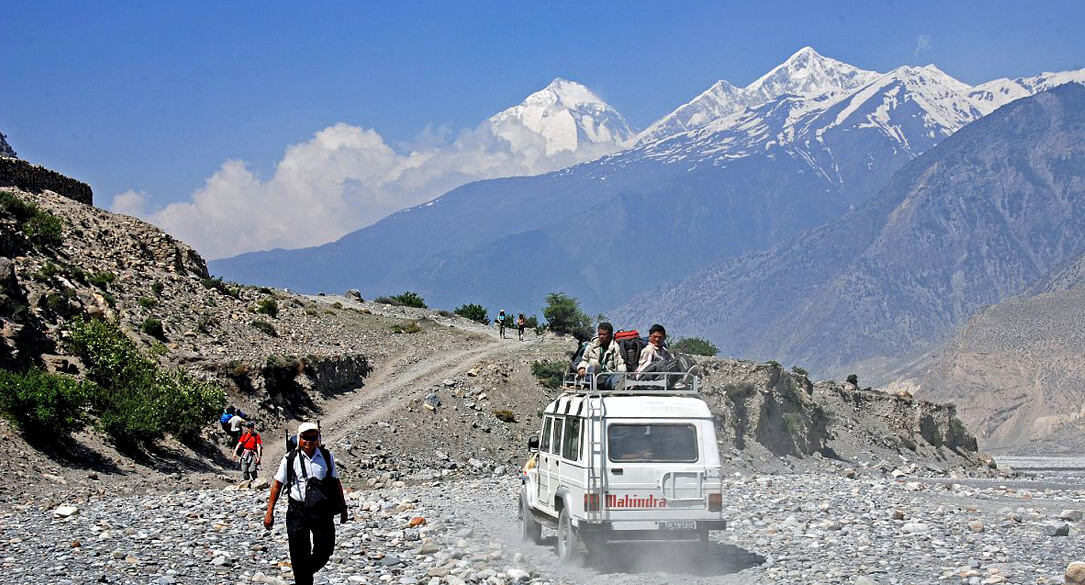
Trekking in Mustang
Trekking is one of the most famous adventure activities in Nepal. The mustang valley also offers amazing trekking trails full of Himalayan wonders that take you away from your routine life to the most remote locations of Nepal. Although it is cold and dry and unlike other hiking regions in Nepal, Mustang offers a unique experience with its dry mountains, Tibetan settlements, and ancient culture.
Trekking permission for foreign trekkers in Upper Mustang was only granted in 1992 with a special permit costing $50 per day and issuable in Immigration of Nepal, Kathmandu. Our Upper Mustang Trek lasts 18 days and takes you to the remotest parts. You'll trek through Jomsom, Kagbeni, Chuksang, Samar, Geling, Ghami, Tsarang, Lo Manthang, and so on.
You can also trek in Lower Mustang, which is easier in difficulty level and doesn't require any special permit other than an ACAP. Mustang is protected under Annapurna Conservation Area, and several Annapurna region treks cover the lower areas of Mustang, among which the Annapurna Circuit is the most trekked. The 20 Days Annapurna Circuit Trek circles you around the Annapurna Range and enters Mustang after passing Thorung La Pass in Manang. You'll hike through Muktinath, Kagbeni, Jomsom, and Kalopani and continue to Pokhara.
Mountain Biking in Mustang
Mustang offers mountain biking trails through the magical mountains and among the true mountain people. It is one adventure activity gaining popularity in Mustang in recent years. Mountain biking in Mustang is suitable for all professional levels starting from beginners to experts, with separate biking trails entertaining each level. You can rent mountain bikes in towns like Jomsom and take them out for a single-day or a multiple-day ride.
Frequently Asked Questions about Mustang
What is the Weather and Temperature of Mustang like?
Mustang is a huge, dry valley with eroded canyons, layered rock formations of various colors, and arid, high-altitude deserts. At Jomsom in Lower Mustang, the average annual precipitation is less than 260 mm. The region often becomes dry in spring and fall, but summer monsoons bring occasional rainfall. The average monthly air temperature in winter is -2.7 degrees Celsius, while the average monthly air temperature in summer is up to 23.1 degrees Celsius. Upper Mustang, however, is a lot more chilly than Lower Mustang.
When is the Best Time to Visit Mustang?
Spring (March, April, and May) and autumn (September, October, and November) is the best time to travel to Mustang due to the moderate temperature and pleasant weather conditions. It is a good time to visit Lower Mustang even in winter (December, January, and February) but stay away from Upper Mustang during this time as winter here gets harsh and very cold. You can also visit Mustang during monsoon (June, July, and August); however, be prepared for occasional rainfall.
How to travel to Mustang?
Once you get to Kathmandu, the capital city of Nepal, there are two ways of getting to Mustang (Jomsom). There are domestic flights running all day from Kathmandu to Pokhara, which is a quick 20-minute flight. From Pokhara, you can take a morning flight to Jomsom Airport, which again takes 20-25 minutes. If you're on a budget and don't mind a lengthy bus ride, you can get daily buses that go from Kathmandu to Jomsom via Pokhara, which takes about 12 hours. You can also go for a combination of flights and busses between Kathmandu-Pokhara and Pokhara-Jomsom for your best convenience.
To Conclude
Reports say that about 50,000+ foreign tourists visited Mustang in 2019, a year before the pandemic, and the number has reached 40,000+ in the year 2022. CNN listing the Mustang Valley in their must-visit destinations for 2023 is your sign to book that flight to Nepal and see this magical land for yourself. We hope the blog has helped you picture the serenity of the Mustang Valley hidden behind the Himalayas. Yet, the words can't do justice to its beauty!
Outfitter Nepal, with 20+ years of experience in the trekking and tourism industry of Nepal, invites you to experience the realness of remote travels in Mustang. We're certain that you'll be fascinated by the awesomeness of the region and the humbleness of the locals. Our experts have designed the itineraries to make the most out of the trips. Our office staff will take care of all the documentation, while our guides and potters will be at your service 24/7 during the trip, ensuring you the best vacation possible. Our happy and content guests are proof of our excellent service at the most competitive market price.
Please don't hesitate to reach out to us if you want to book any of the Mustang trips mentioned in the blog or if you have questions related to any trips provided by Outfitter Nepal. Mail: info@outfitternepal.com call, or Whatsapp: +9779851137385, whatever is comfortable for you. We're always available for you. Hope to see you soon in Nepal!
Some Most Popular Treks
